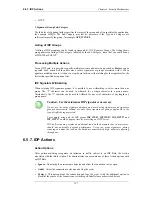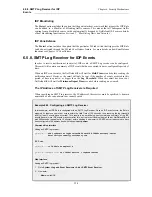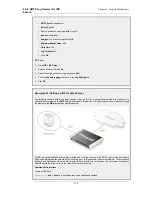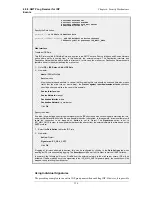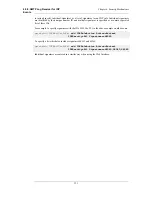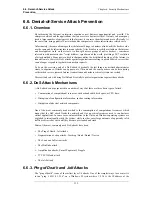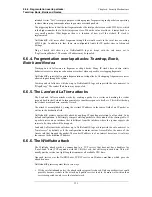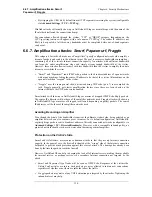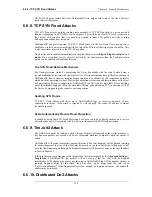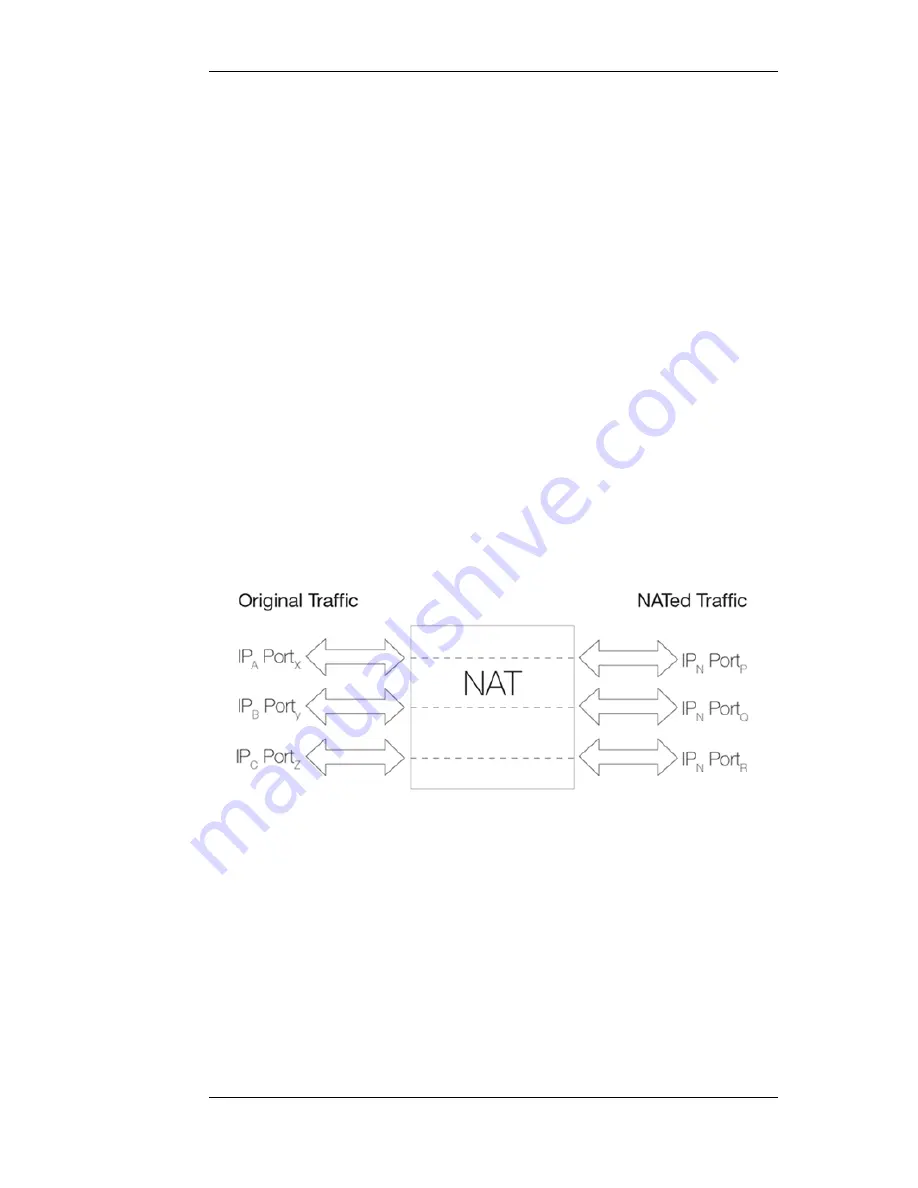
7.2. NAT
Dynamic Network Address Translation (NAT) provides a mechanism for translating original source
IP addresses to a different address. Outgoing packets then appear to come from a different IP
address and incoming packets back to that address have their IP address translated back to the
original IP address.
NAT can have two important benefits:
•
The IP addresses of individual clients and hosts can be "hidden" behind the firewall's IP address.
•
Only the firewall needs a public IP address for public Internet access. Hosts and networks
behind the firewall can be allocated private IP addresses but can still have access to the public
Internet through the public IP address.
NAT Provides many-to-one IP Address Translation
NAT provides many-to-one translation. This means that each NAT rule in the IP rule set will
translate between several source IP addresses and a single source IP address.
To maintain session state information, each connection from dynamically translated addresses uses a
unique port number and IP address combination as its sender. NetDefendOS performs automatic
translation of the source port number as well as the IP address. In other words, the source IP
addresses for connections are all translated to the same IP address and the connections are
distinguished from one another by the allocation of a unique port number to each connection.
The diagram below illustrates the concept of NAT.
Figure 7.1. NAT IP Address Translation
In the illustration above, three connections from IP addresses A, B and C are NATed through a
single source IP address N. The original port numbers are also changed.
The next source port number allocated for a new NAT connection will be the first free port selected
randomly by NetDefendOS. Ports are allocated randomly to increase security.
Limitations on the Number of Connections
There is a limitation of approximately 64,500 simultaneous NAT connections where each
connection consists of a unique pair of IP addresses. The term IP pair means one IP address on a
NetDefendOS interface and the IP address of some external host to which a connection is being
made. If two different IP addresses on an external host are being connected to from the same NAT
7.2. NAT
Chapter 7. Address Translation
341
Summary of Contents for DFL-1600 - Security Appliance
Page 27: ...1 3 NetDefendOS State Engine Packet Flow Chapter 1 NetDefendOS Overview 27 ...
Page 79: ...2 7 3 Restore to Factory Defaults Chapter 2 Management and Maintenance 79 ...
Page 146: ...3 9 DNS Chapter 3 Fundamentals 146 ...
Page 227: ...4 7 5 Advanced Settings for Transparent Mode Chapter 4 Routing 227 ...
Page 241: ...5 4 IP Pools Chapter 5 DHCP Services 241 ...
Page 339: ...6 7 Blacklisting Hosts and Networks Chapter 6 Security Mechanisms 339 ...
Page 360: ...7 4 7 SAT and FwdFast Rules Chapter 7 Address Translation 360 ...
Page 382: ...8 3 Customizing HTML Pages Chapter 8 User Authentication 382 ...
Page 386: ... The TLS ALG 9 1 5 The TLS Alternative for VPN Chapter 9 VPN 386 ...
Page 439: ...Figure 9 3 PPTP Client Usage 9 5 4 PPTP L2TP Clients Chapter 9 VPN 439 ...
Page 450: ...9 7 6 Specific Symptoms Chapter 9 VPN 450 ...
Page 488: ...10 4 6 Setting Up SLB_SAT Rules Chapter 10 Traffic Management 488 ...
Page 503: ...11 6 HA Advanced Settings Chapter 11 High Availability 503 ...
Page 510: ...12 3 5 Limitations Chapter 12 ZoneDefense 510 ...
Page 533: ...13 9 Miscellaneous Settings Chapter 13 Advanced Settings 533 ...

